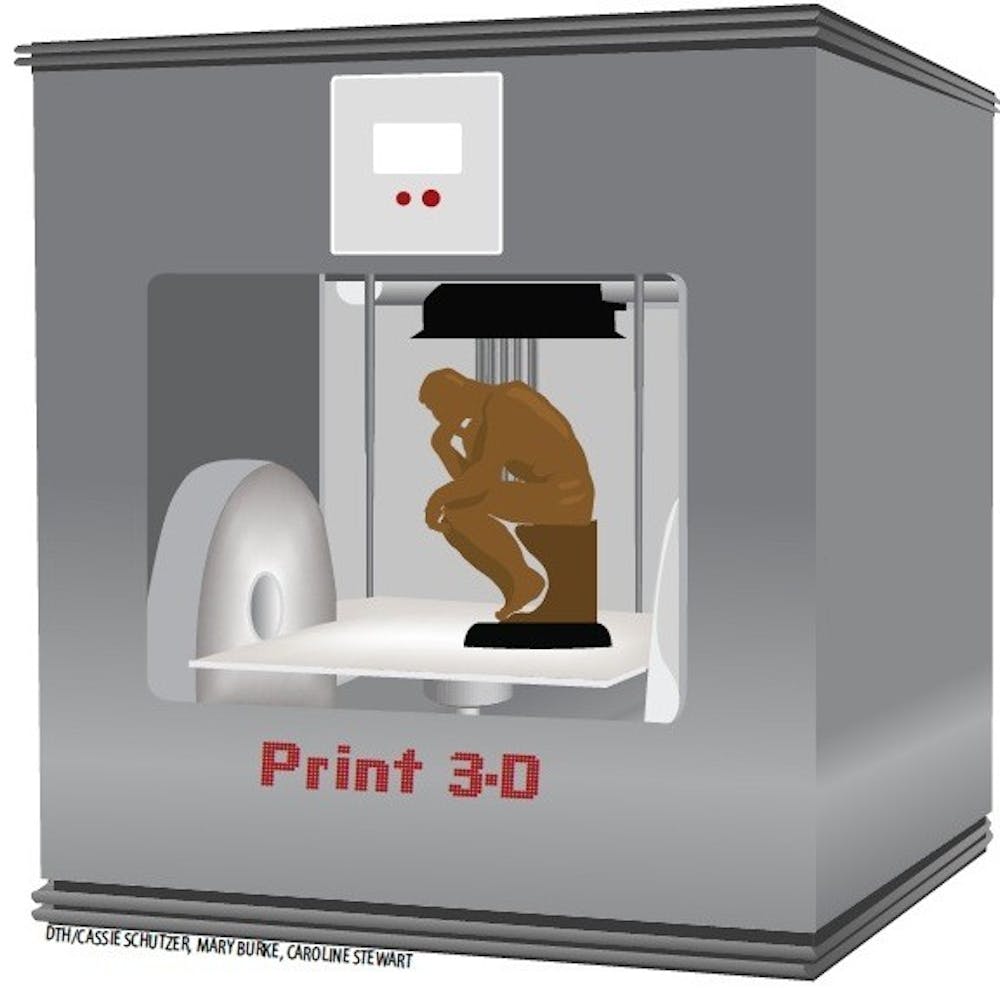Parachutes and box fans were suspended from the ceilings. Laser cutouts of animals were hanging from a fan and spinning around continuously, and the artist described them as “collaged cybernetic mythological creatures.”
These were just a few of the bizarre and interesting elements of Lile Stephens’ exhibit “Aesthetic Conditions.”
Stephens, an MFA student who incorporates computer science into his art, is an example of the change that has been occurring in the arts at UNC. Students are no longer confined to basic clay sculpture or a paint brush — they can now incorporate technology into their work and use different devices to enhance it.
“The hardware is what I’ve been most interested in, as opposed to creating a video work and editing it and that being the piece,” Stephens said.
And Stephens isn’t the only student in the art department who is branching out away from traditional art forms to combine two disciplines. Jack Twiddy, a junior studio art and philosophy double major, bought his own 3-D printer used for $750 as a way to teach himself about sculpture and computer-assisted design programs before applying to graduate school for architecture.
Twiddy, who has traditionally been a painter, said he has wanted a 3-D printer since he was 12 years old because it’s a way to translate the digital world into the physical world.
“I wanted to understand and wanted to do as much of the process by myself as possible,” Twiddy said. “But, moreover, it gives us more control over the process just because by understanding the tools and technology, it gives us an idea of what’s possible to do with it and allows us to better work with and manipulate the resources available to us.”
Twiddy said understanding the computer softwares behind 3-D printing has been one of the most difficult parts of the process. Once he sketches the design of a sculpture, he has to model it using computer programs called Blender and ZBrush. Then he uses another program to turn the model into digital instructions for the printer to follow, which are called a stereolithograph file.
These instructions cut the model into flat layers, and then the printer creates the 3-D sculpture — layer by layer.



